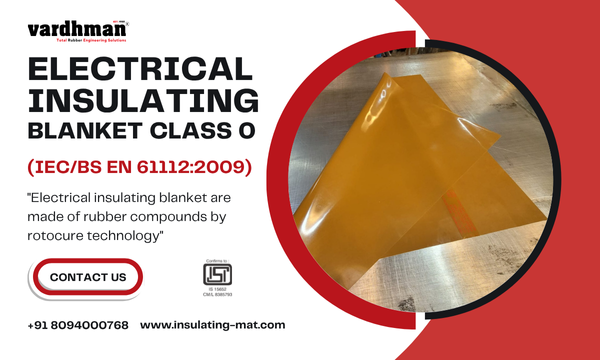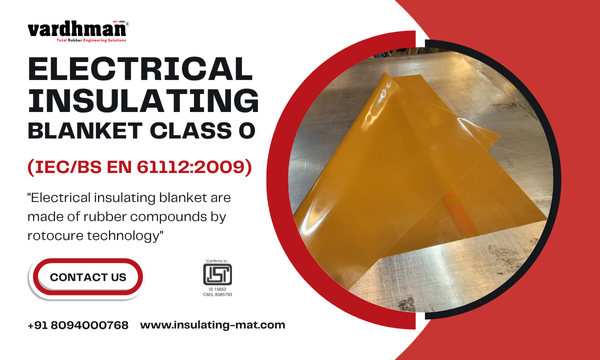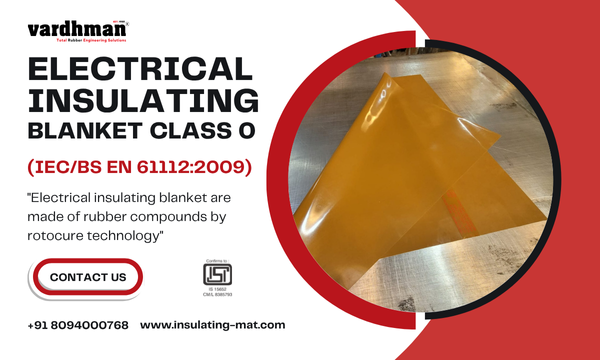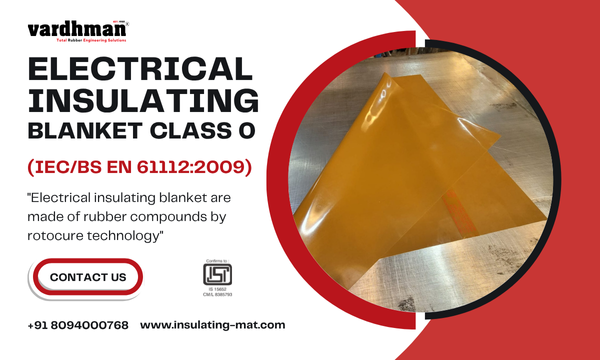
Electrical insulating mats are classified based on their voltage protection capacity. Understanding these classifications is crucial for selecting the right mat for your specific application.
Classification Standards
Insulating mats are classified according to:
- ASTM D178: American standard for electrical insulating matting
- IEC 61111: International standard for live working
- IS 15652: Indian standard for electrical safety matting
Mat Classes and Voltage Ratings
Class 00 (Red)
- Maximum Use Voltage: 500V AC
- Proof Test Voltage: 2,500V AC
- Applications: Low-voltage electrical work, residential panels
- Color Code: Beige/Red
- Common Uses: Household electrical panels, light commercial applications
Class 0 (Red)
- Maximum Use Voltage: 1,000V AC
- Proof Test Voltage: 5,000V AC
- Applications: Commercial electrical panels, small industrial installations
- Color Code: Red
- Common Uses: Office buildings, retail spaces, light manufacturing
Class 1 (White)
- Maximum Use Voltage: 7,500V AC
- Proof Test Voltage: 10,000V AC
- Applications: Medium-voltage switchgear, substations
- Color Code: White
- Common Uses: Distribution substations, industrial motor control centers
Class 2 (Yellow)
- Maximum Use Voltage: 17,000V AC
- Proof Test Voltage: 20,000V AC
- Applications: High-voltage substations, power generation facilities
- Color Code: Yellow
- Common Uses: Power plants, transmission substations, heavy industry
Class 3 (Green)
- Maximum Use Voltage: 26,500V AC
- Proof Test Voltage: 30,000V AC
- Applications: Very high-voltage installations
- Color Code: Green
- Common Uses: High-voltage transmission lines, large power stations
Class 4 (Orange)
- Maximum Use Voltage: 36,000V AC
- Proof Test Voltage: 40,000V AC
- Applications: Ultra high-voltage systems
- Color Code: Orange
- Common Uses: Major substations, utility-scale power generation
Physical Specifications
Thickness Requirements
- Type I: 1/8 inch (3.2 mm) - Lower voltage classes
- Type II: 1/4 inch (6.4 mm) - Higher voltage classes
- Type III: Special thickness as required
Mat Properties
- Material: Natural or synthetic rubber compound
- Surface: Non-slip texture (both sides)
- Edges: Beveled or straight
- Flexibility: Remains flexible in temperature range -25°C to +75°C
Selection Criteria
1. Voltage Assessment
Choose a mat class rated for at least the maximum voltage present in your work area. As a safety margin, select one class higher than the minimum requirement.
2. Environmental Factors
- Chemical Exposure: Select chemically resistant materials
- Oil Presence: Choose oil-resistant formulations
- Temperature: Verify mat rating matches environmental conditions
- Moisture: Ensure water resistance where needed
3. Physical Requirements
- Coverage area dimensions
- Thickness for comfort and protection
- Weight and portability needs
- Installation method (permanent vs. portable)
4. Compliance Requirements
- Local electrical codes
- Industry-specific regulations
- Insurance requirements
- Corporate safety standards
Testing and Certification
Factory Testing
All insulating mats must undergo proof testing at voltages specified by ASTM D178:
- AC proof test at specified voltage
- Held for prescribed duration (typically 1 minute)
- No breakdown or flashover permitted
- Certification marking applied after passing
Field Testing
Periodic testing requirements:
- Initial: Before first use
- Periodic: Every 12 months minimum
- After Damage: If physical damage suspected
- After Incident: If involved in electrical event
Maintenance and Care
Daily Checks
- Visual inspection for cuts, punctures, or wear
- Check for contamination or chemical exposure
- Verify proper placement and coverage
- Ensure mat is clean and dry
Cleaning Procedures
- Use mild soap and water solution
- Avoid harsh chemicals or solvents
- Allow to air dry completely
- Never use petroleum-based cleaners
Storage
- Store flat or rolled (not folded)
- Keep in cool, dry location
- Away from direct sunlight or ozone sources
- Protected from physical damage
Common Mistakes to Avoid
- Under-rating: Using a mat class lower than required voltage
- Damage Ignorance: Continuing to use damaged mats
- Improper Cleaning: Using incompatible cleaning agents
- Skipping Testing: Failing to conduct periodic electrical tests
- Poor Storage: Folding or exposing to harsh conditions
Cost vs. Safety Considerations
While higher-class mats cost more, the investment is justified by:
- Enhanced worker protection
- Reduced liability risk
- Longer service life
- Compliance with regulations
- Peace of mind
Conclusion
Understanding electrical insulating mat classifications is essential for workplace safety. Always select the appropriate class for your specific voltage requirements, maintain mats properly, and ensure regular testing to maximize protection for your workers.




